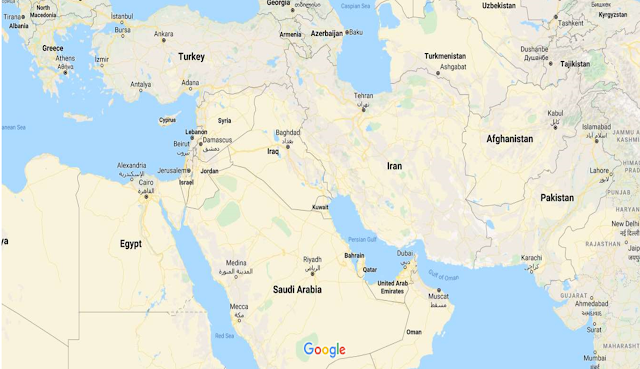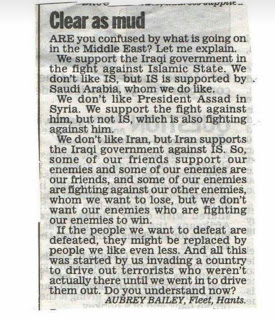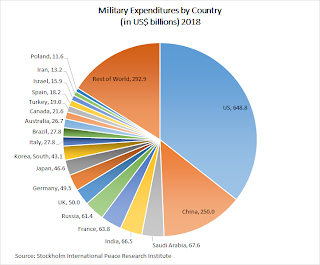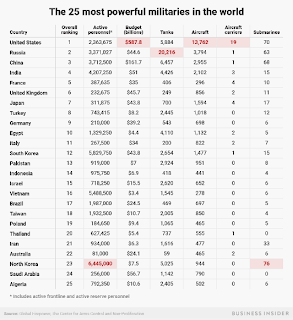
The US-Iran Spat in Brief
On December 31, 2019, supporters of Iran backed militia attacked the US embassy in Baghdad. It was in retaliation to an US airstrike on a camp of an Iran backed Hezbollah offshoot group which resulted in the death of 25 fighters. USA retaliated by an armed UAV attack which targeted and killed Maj Gen Soleimani, head of the Iranian Quds Force in Bagdad on 3 Jan 2020. It triggered a national outpour in Iran which vowed appropriate revenge. On 8 Jan 2020, Iran fired 16 missiles at two air US bases in Iraq and claimed it to be a slap in the US face. President Trump tweeted “all is well”. Reports indicate that the attacks deliberately missed their targets. Later in a televised follow up address, the US President pledged not to allow Iran to acquire nuclear capability and warned it against future terrorism or destabilizing actions in the region. At the end he acknowledged that US and Iran had a common foe in IS and offered an olive branch of cooperation.
The Stalemate

The sum of all views of analysts in the American Media is that the short US – Iran military spat has ended for now in a stalemate with face saving takeaways for both sides. There will be many views on this. The geopolitics of the Middle East, best described in this news clip, will continue unabated, The issues are as coiled as the serpents of Medusas hair. This article is not about the geopolitics of the area. It is about the military aspects which have bubbled up and are very relevant in our context. In this short spat, we saw USA, the full spectrum superpower being held to a military stalemate by Iran, a nation which is under heavy and strict sanctions. It is not nuclear and does not have even full spectrum conventional capability. However, one must look at it in a wider framework and examine Iranian military actions in the recent past to come to get a better idea.
Noteworthy Iranian Actions
Iran has been targeting assets of US and its allies with out let up in a multi mode manner. Since 2004, the Quds Force has been using E.F.P.s (explosively formed projectiles) which fire a molten copper slug to penetrate armor. These seem to be innovated anti-armor Claymore mines. They are described as lethal roadside bombs by President Trump, but are professionally made by skilled Irani technicians. They were triggered by sophisticated motion sensors. They wreaked havoc and killed hundreds of Americans, accounting for nearly 20% of combat deaths. As per General Stanley McChrystal, USA knew the location of their factories in Iran. On June 6, 2019 an Iranian surface-to-air missile destroyed a U.S. Global Hawk surveillance UAV over the Strait of Hormuz. Both these actions found mention in President Trump’s speech. On 13 Jun 2019 two oil tankers Kokuka Courageous and Front Altair, were attacked in the Gulf of Oman with limpet mines. Iran is suspected to have carried out the attacks. On 14 Sep 19 at about 0400h, the ARAMCO oil refineries at Khurais and Abqaiq were attacked. The attacks were simultaneous in two waves. It was reported that the attack was carried out using a combination of 25 UAVs and cruise missiles. This action has been analyzed in detail earlier. The limpet attacks and the ARAMCO attacks have been attributed to Iran.
Capability Convergence
Iran has effectively used Surface to Surface missiles, surface to air missiles, Armed UAVs, Cruise missiles, Limpet mines, anti-armor claymore type mines and irregular forces against USA in the most calculated and calibrated manner. They have been Direct and Indirect. Results and outcomes have been clearly strategic through tactical operations. The effects are visible and tangible enough to make a superpower back off! Add to this the Quds Force which the USA considers to be a combination of C.I.A. and Special Forces has militarized Shiaism and stitched an overseas Shia based alliance consisting now of militias and regulars in Iraq, Syria, Lebanon and Yemen. It is feared by Sunnis (and Saudis in particular), respected by USA and keeps Israel on its toes. It is also reported that Iran is one of the five countries that has a cyber-army capable of conducting cyber-warfare operations. If one sees it holistically Iran has operated through multiple domains seamlessly. Iran has clearly walked away with military and geopolitical honors. I think there is a lot to learn from this capability convergence in development, deployment and operational execution.
Non-Contact Warfare
A significant aspect of all actions is that Iran has displayed an outstanding ability to carry out Non-Contact Conventional Warfare with good effect at distances far away from their land. They have put into effect “Deterrence by Denial” as well as “Deterrence by Punishment”. Remarkably they have fought outside their territory and carried the battle well into enemy territory. It demands a very high level of capability, planning, accurate intelligence and risk-taking ability to carry out such complex operations. In India we are an embryonic stage to execute such operations. Overall, they appear to be far more surgical than the shallow and minimum risk operations ones carried out by us, considering the actions and their outcomes. Our concept of Non Contact Warfare stops at the depth of the first Pakistani post across the LOC.
Seamless National Approach
While the Political Executive and Military Leadership are accountable to a nation, their success or failure lies in the seams between them. The seamlessness between the political and military leadership in Iran and its reverence by the nation is clear and shines through. The crowds at the last multi city rites of Maj Gen Soleimani are a testimony to this. The bureaucrats and scientists clearly support the forces and the nation to achieve its goals. Indian polity has a major lesson to learn here. In India, the unaccountable Bureaucrats, Scientists and Defence Production Professionals manipulate the politicians and run the military establishment as if the Armed Forces are a side show. Procedures are more important than national capability. There is a fundamental flaw in our system. I do hope someone of authority and sense is reading this. It is understood that India is a democracy and that places certain limits. However, we still come up short.
Indigenous Military Power

Iran was a major importer of Arms and ammunition till the Iran- Iraq war. After that it has largely been isolated and unable to import. Its import bill in 2018 was only 4 million US dollars or 2.5 per cent of that of Saudi Arabia. It has had to do with old equipment of the yore. Its air fleet still has planes flown in from Iraq during the Gulf Wars and never returned. These have been kept in use through one trick or the other. It is my estimate that with some help from Russia, China and N Korea it has built up an indigenous defense industry. It is now self-sufficient, consistent with its fighting philosophy, force structure and a need-based weapon inventory. All the weapons in examples quoted above are indigenous and effective. For example, since it does not have an effective air force it has gone the missile and UAV way. As far as missiles are concerned it has an extensive arsenal of accurate missiles across all ranges as tabulated in the diagram. Their accuracy has been established by the deliberate miss of US airbases recently. It has long range cruise missiles which even our famed missile program has not been able to come up with. There is a clear thought process between the scientific community, armed forces and polity that Iran will have what it needs. It will also be manned and operated seamlessly. Just look at our system. The ISRO and DRDO are not on one page. The SFC, Army, Navy and Air Force are not on one page. Despite not having adequate fighters we deliberately reduce our missile capability through a military logic beyond normal comprehension. Ours is a mentally fractured set up whose pinnacle of visionary planning seems to be even entertaining the Infantry desire to man SFC missile systems. I hope the PM, RM, NSA and CDS get to reads this.
Daring in Depth
A very impressive capability demonstrated by Iran is its ability to operate deep in enemy territory, very accurately and tellingly. The attacks on the Aramco oils fields were innovative, complicated and accurate at 300 & 400 km from Iran soil. The missile attacks at Erbil air base were at 100 km range and on Ain Asad air base at about 300 km in depth. The limpet mine attack was at about 50 – 100 km away from Iranian shores in the Gulf of Oman. The US drone was probably brought down in international waters in the Straits of Hormuz. All effective and daringly carried out one might add. They have also carried out devastating and innovative EFP/mine attacks very accurately in Iraq with telling effect. Do something similar to the CPEC and the Pakistani white flag will be out in a trice. Apart from the daring bit, Iran has clearly indicated a high level of design and development capability through multiple technologies. Can DRDO dream about equipping our Armed forces with such weaponry? It is a challenge not only to them but also to our entire system. Can our Armed forces carry out such attacks in depth? How can they if their thinking range is restricted to 300m of a rifle?
Budgets and Forces

Iranian budgets are a joke in comparison to the demonstrated outcomes. Iran spent just $13.2 billion on its military in 2018. Compare it to the $66 bn spent by us. In the list of 25 most powerful militaries it stands 21st as compared to India at number 4 spot. See charts below. They are self-explanatory. With such disproportionately low budgets and strengths Iran has cocked a snook at USA and has walked away with honors. Do not doubt that there are hidden angles in Irans defense spending. SIPRI says that Iran has a very transparent budget. If this is not impressive, what is?

The UAV Example
Let us juxtapose the Iran way with another example of ours. The Indian Army, Air Force, Navy and its Intelligence have been operating Israeli similar UAVs for two decades, bought at great expense. However, these UAVs are inoperable with each other. They are still maintained on AMC basis and we must run around for spare parts through import. Training of personnel is still separate. Forget synergy, they are operated in watertight compartments by design. What is more, the Army has changed its Horses (UAVs) mid-stream (mid-air) after 20 years thereby putting all the experience gained to a dustbin. The DRDO has been trying to develop the last generation UAV for the last two decades unsuccessfully. It has also ensured that others like the IITs do not give it competition by actively blocking funding for their innovative projects. The UAV story in India is like the ‘Curious Case of Benjamin Button’. Many more such stories can be recounted. Our military is a fragmented system unambiguously. When we are in such a state how can we think of exploiting weaknesses of our adversaries with soft but lethal options like Democracy, Religion or Ethnicity. Before we aspire for a whole of the nation approach, we must achieve a whole of the Armed Forces approach.
Conclusion
One might critique me for praising Iran too much. One might castigate me for downplaying our own abilities disproportionately and disparagingly. Let me make some facts clear. I am proud of our Armed Forces. They have never let India down except in 1962, when its politicians let it down. They will do our country proud in future also. However, that is not a Carte Blanche for the way we are messing up things with utter disregard to visible hard reality of the future. The hard reality is that war is changing. The US – Iran Spat, the Balakot episode and the Doklam crisis are clear indicators of what is ahead. Unless we change our boots on the ground mentality, we will come up against an adversary who will operate through multiple domains and bypass us in a blitz when we are still warming the trenches with masses in cold Himalayas and preparing for a war of yesterday which is in the past.








